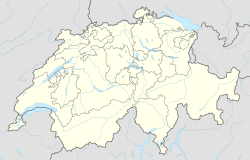
Bülach is a historic town and a municipality in Switzerland in the canton of Zürich. It is the administrative capital of Bülach district. It is situated in the Glatt Valley to the east of the small river Glatt and about 4 km (2.5 mi) south of the High Rhine and about 6 km (3.7 mi) north of the Zurich Airport.

Rafz is a municipality in the district of Bülach in the northwest of the canton of Zürich in Switzerland.

Dällikon is a municipality in the district of Dielsdorf in the canton of Zürich in Switzerland.

Oberglatt is a municipality in the district of Dielsdorf in the canton of Zürich in Switzerland, and belongs to the Glatt Valley. Zurich Airport is partially in Oberglatt.

Neuhausen am Rheinfall is a town and a municipality in the canton of Schaffhausen in Switzerland.
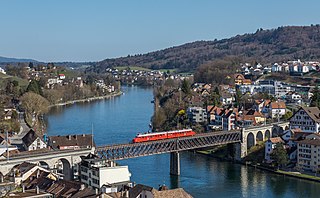
Feuerthalen is a municipality in the district of Andelfingen in the canton of Zürich in Switzerland. Langwiesen also belongs to the same municipality.

Dielsdorf is a municipality, seat of the district of Dielsdorf in the canton of Zürich in Switzerland.

Steinhausen is a city in the canton of Zug in Switzerland.

Affoltern am Albis is a town and a municipality in the district of Affoltern in the canton of Zürich in Switzerland.

Glattfelden is a municipality in the district of Bülach in the canton of Zürich in Switzerland, and belongs to the Glatt Valley.

Hüntwangen is a municipality in the district of Bülach in the canton of Zürich in Switzerland.
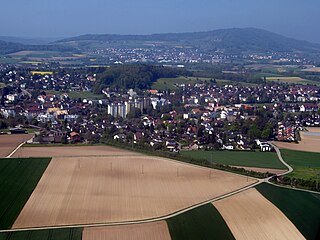
Niederglatt is a municipality in the district of Dielsdorf in the canton of Zürich in Switzerland.

Pfungen is a municipality in the district of Winterthur in the canton of Zürich in Switzerland.

Rheinau is a municipality in the district of Andelfingen in the Canton of Zürich in Switzerland. It is located at a bend of the Rhine River which forms the Swiss-German border in this area. A bridge links Rheinau to Altenburg, part of the municipality of Jestetten, Baden-Württemberg state.

Dachsen is a municipality in the district of Andelfingen in the canton of Zürich in Switzerland.

Laufen-Uhwiesen is a municipality in the district of Andelfingen in the canton of Zürich in Switzerland.

Marthalen is a municipality in the district of Andelfingen in the canton of Zürich in Switzerland.
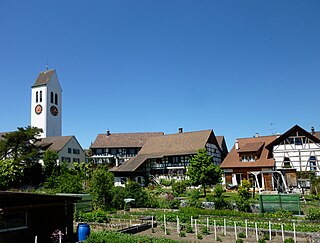
Ossingen is a municipality in the district of Andelfingen in the canton of Zürich in Switzerland.
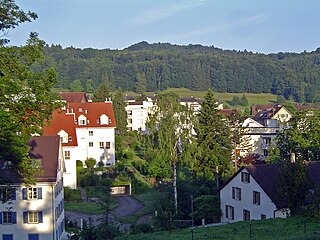
Urdorf is a municipality in the district of Dietikon in the canton of Zürich in Switzerland, located in the Limmat Valley.

Schwerzenbach is a municipality in the district of Uster in the canton of Zürich in Switzerland, and belongs to the Glatt Valley.



